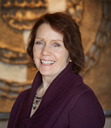Molly Larkin's Blog, page 17
July 31, 2014
Why Facebook may save the world
 I love Facebook, and not for the usual reasons.
I love Facebook, and not for the usual reasons.
I joined kicking and screaming about five years ago after my Australian friend Barbara convinced me it was a great way to stay in touch with friends around the world.
She was right, but I’ve found it’s also so much more.
“Between Twitter and Facebook and how close you can be with your fans and how close they can be to you these days is, I think, quite miraculous. It’s like getting a greeting card every single day.” Holland Roden, actress
Facebook was founded by Mark Zuckerberg in a Harvard dorm room in 2003 and has since changed the way we live our lives.
Is it misused? Of course. But the good it is doing can’t be minimized – it’s connecting the world, or at least the half a billion people worldwide who use it.
Facebook is an excellent example of the old saying: “you get out of it what you put into it.”
Here is what I don’t do on Facebook
I don’t play games [with the exception of an occasional online Scrabble game with my friend Wanda].
I don’t take surveys to find out what kind of flower, animal or moonbeam I am. Turns out many of these quizzes are actually data mining tools for advertisers. Ever notice the ads on the right of the page are for things you have searched for or were answers on these quizzes? We’re going to be seeing more of these games, so just be discerning.
I don’t post much personal information.
I don’t complain. In fact, I have unfriended many people who use Facebook that way. If you’re not contributing to the raising of the vibration of the planet, I don’t want to interact with you. This may sound harsh but we’re living in a time of great danger to our planet. In the words of Buckminster Fuller, “There are no passengers on Spaceship Earth.” Either contribute to solutions or step aside.
I don’t stalk or bully people.
“I didn’t know what Facebook was, and now that I do know what it is, I have to say, it sounds like a huge waste of time. I would never say the people on it are losers, but that’s only because I’m polite. People say ‘But Betty, Facebook is a great way to connect with old friends.’ Well at my age, if I wanna connect with old friends, I need a Ouija Board. Needless to say, we didn’t have Facebook when I was growing up. We had a phonebook, but you wouldn’t waste an afternoon with it.” Betty White, 92-year old American actress and comedian
Here’s what I do on Facebook
Post and share inspiring articles, photos and quotes. My favorite sites are Zig Ziglar and The Mind Unleashed. If I’m feeling a little down, taking a look at Facebook for the inspiration shared by my friends and my “liked” organizations is a great pick-me-up.
Occasionally announce a class or event I’m hosting.
Take a look at friends and family pages to see photos they’ve posted and get updates on their travels, etc.
Get the important news that mainstream media won’t touch, particularly about health and the environment. Facebook is the only place to get the full story about GMOs, environmental pollution by big business, etc. Did you know that foods labeled “USDA Organic” are not actually organic?? I learned that from a very intelligent, well-researched article on Facebook. Of course, you have to be discerning and consider the source, because there are many false articles, too.
Comment on issues I find important and of interest.
Private message friends who’s emails I don’t have. Emails can change, but FB private messaging will likely always be there. I’ve found that many people spend more time on Facebook than checking e-mail, so private messaging may be a faster way to reach them.
Little known Facebook facts:
• Facebook encourages community and communication. Did you know that anything you post on Facebook only gets seen by about 16% of your friends or fans?
And the ones likely to see your posts are those who interact with you most often through likes, shares and comments. So, the more you comment on and share posts from a particular source, the more of them you’ll see.
“The thing that we are trying to do at Facebook, is just help people connect and communicate more efficiently.” Mark Zuckerberg, founder of Facebook
• In 2011, Facebook was sited as a reason for a third of divorces, according to Divorce – Online, a British divorce firm. The most common reasons cited were inappropriate messages to members of the opposite sex, separated spouses posting nasty comments about each other, and Facebook friends reporting spouse’s behavior.
It once again comes down to the fact that we all need to take responsibility for our actions and be discerning.
• The general consensus by experts is that Facebook has facilitated political protests around the world, such as in Columbia and the Arab Spring: communication through social media is hard for oppressive regimes to control unless they shut the down the internet entirely.
“Facebook is bringing the world together… It has become an overarching common cultural experience for people worldwide, especially young people….It’s membership spans generations, geographies, languages and class. It changes how people communicate and interact, how marketers sell products, how governments reach out to citizens, even how companies operate. It is altering the character of political activism, and in some countries it is starting to affect the processes of democracy itself.” David Kirkpatrick in The Facebook Effect: The Inside Story of the Company That Is Connecting the World
“Facebook was not originally created to be a company. It was built to accomplish a social mission – to make the world more open and connected.” Mark Zuckerberg
And isn’t that what we all want?
There is great good to be accomplished by open communication among the 99% of the world. Let’s all use social media for the good it can do.
July 23, 2014
9 benefits of stretching in the morning
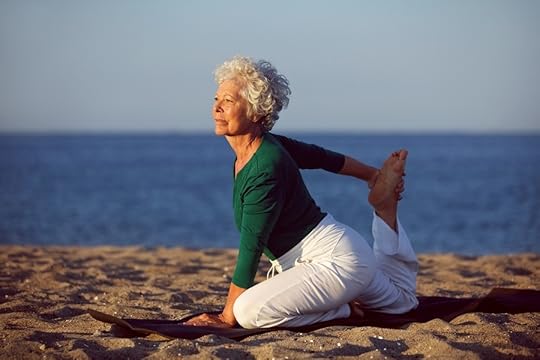
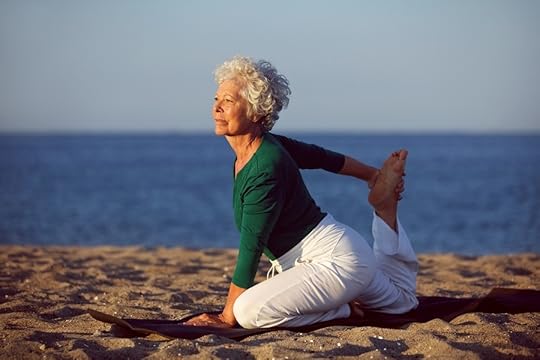
A few decades ago, I had frequent back pain and visited my chiropractor often. That was before I discovered stretching.
There wasn’t anything inherently wrong with my back – my problem was I sat at a desk all day, then was very physically active evenings and weekends without stretching properly before and after walking, running, hiking, cycling, etc.
During one visit, my chiropractor handed me a sheet depicting a morning stretching routine and told me to do it every day. The bad news is that I’ve lost the sheet and can’t share it with you.
The good news is I personally don’t need it any more because I know it by heart.
That’s because I’ve done this stretching routine every morning for 30 years.
That’s right – every morning for thirty years. And you know what? The back pain is long gone.
Since I no longer have the sheet my chiropractor gave me so many years ago, I’m going to give you a list of links to morning stretching routines that look good to me.
Check with your doctor or chiropractor, first, then find a routine that appeals to you.
Hopefully in thirty years you can say you’ve done it every day and your body is pain free!
And you will not have aged as much as those who do not stretch each day!
“Do something today that your future self will thank you for.”
Benefits of stretching
According to stretching master Bob Anderson in his classic best seller, Stretching: 30th Anniversary Edition , here are the reasons to stretch:
, here are the reasons to stretch:
Reduce muscle tension and make the body feel more relaxed
Help coordination by allowing for freer and easier movement
Increase range of motion
Help prevent injuries such as muscle strains
Make strenuous activities like running, skiing, tennis, swimming and cycling easier because it prepares you for activity; it’s a way of signaling the muscles they are about to be used
Helps maintain your current level of flexibility, so as time passes you do not become stiffer and stiffer
Develop body awareness, as you stretch various parts of the body you focus on them and get in touch with them; you get to know yourself.
Help loosen the mind’s control of the body so that the body moves for “it’s own sake” rather than for competition or ego
Feel good
Links to good stretching routines
10-15 minute Morning Stretch Routine
Dr. Oz’s Morning Stretching Routine
Daily Morning Stretching Exercises from Livestrong
6 Full-Body Stretching Exercises
I hope you find one you enjoy. Let me know how it goes!
“I never struggled with injury problems because of my preparation – in particular my stretching.” Edwin Moses [track and field Olympic athlete]
July 15, 2014
Bear Heart on healing
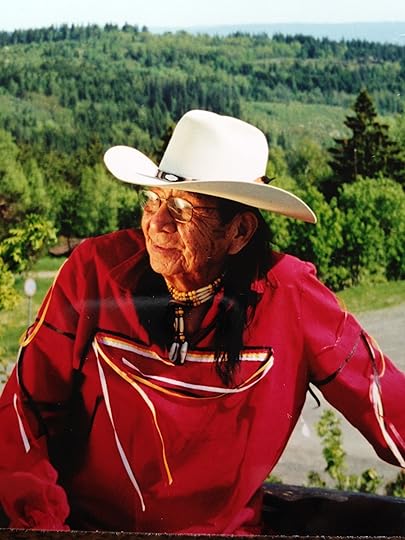
 Bear Heart was a traditionally trained healer of the Muskogee Creek tribe. What outsiders would call a “medicine man.”
Bear Heart was a traditionally trained healer of the Muskogee Creek tribe. What outsiders would call a “medicine man.”
But the real ones don’t call themselves “medicine men” as Bear Heart explains in this video.
The medicine is already here – healers just put things together to facilitate healing taking place.
July 9, 2014
Why we need the salt of the earth
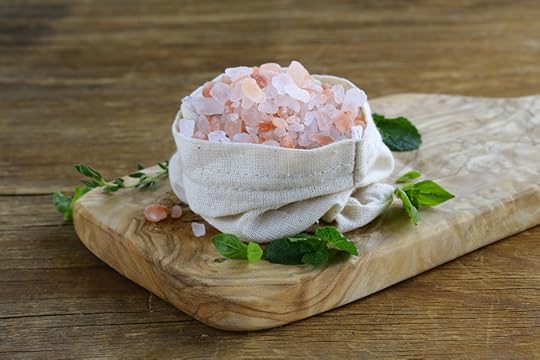
“Let there be work, bread, water and salt for all.” Nelson Mandela
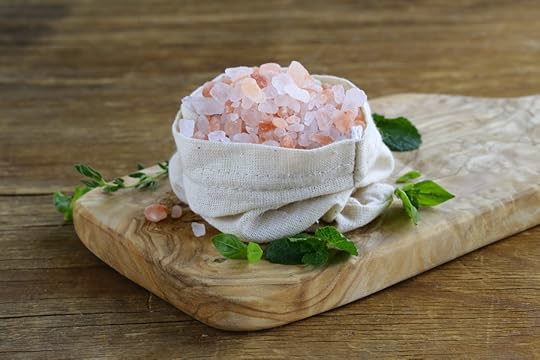
Salt has a bad reputation, through no fault of its own. It’s come about because most people use commercial table salt, an unhealthy concoction which we shouldn’t be ingesting in the first place.
Not all salt is created equal. Natural salt from the earth is what we should be using, and the results can contribute greatly to good health. Commercial table salt does just the opposite.
To the ancients, salt was as valuable as gold
Indigenous people have always known the importance of natural salt.
Some years ago, I was in a purification lodge on the Navajo reservation in New Mexico. It was hot, potentially draining, and, in addition to passing around water, the ceremony leader passed around a bag of salt chips mined from a local abandoned salt mine in order to help us replace the salt our bodies were losing from sweating.
The discovery of salt as a preserving agent allowed previously nomadic peoples to become stable by giving them the ability to keep food from spoiling – it allowed them to build reserves in anticipation of periods when hunting was poor.
For a period of 3,000 years, until the advent of sterilization and refrigeration, salt was the only means of preserving food.
The Gospel of St. Matthew refers to those who bear the word of Christ as the “salt of the earth.”
In the ancient trade route it was called “white gold.”
The Latin root of salt, sal, is the origin of the word salary –salt was so highly valued it was used as payment for services rendered.
Why commercial table salt is not our friend
The commercial table salt we buy at the supermarket is one more example of humanity trying to improve upon Mother Nature and failing yet again.
Commercial white table salt sold in supermarkets as salt is not real salt – it’s been so processed that very little nutritional value remains.
That’s why it causes us so many health problems and doctors warn us to reduce our salt intake.
It’s been “purified” at over 1200 F. – changing its chemical structure.
The reason commercial table salt can raise blood pressure is that it has a high content of sodium without enough magnesium to balance it.
Table salt consists of 97.5% sodium chloride – too much – and 2.5% additives. Natural salt consists of just 85% sodium chloride and 15% trace minerals.
Refined salt has been bleached and the natural minerals which keep our blood pressure stable have been removed. Its also been exposed to toxic chemicals in the process, such as anti-caking compounds to make it pour more easily.
The anti-clumping chemicals added to commercial table salt also inhibit its ability to regulate hydration in your body.
Regulating our hydration is one of salt’s main functions. Sodium is necessary for our bodies to regulate fluids and blood pressure, and to keep muscles and nerves running smoothly. The refining process table salt goes through removes all the minerals that keep blood pressure stable.
Studies have shown that table salt absorbs 20 times its weight in water so that the body can neutralize the sodium chloride. As a result, we can end up dehydrated.
The only three types of salt you should consider using
Natural salt from the earth is what we should be using. The three most popular are: Himalayan pink salt, Celtic sea salt, and “Real Salt.” They contain enough magnesium and other necessary trace minerals to support health.
“Real Salt” is an all-natural unrefined sea salt harvested from an ancient dried ocean in Redmond, Utah.
Celtic Sea Salt is harvested by hand from the current ocean in the salt flats in Brittany, France. Because our oceans are so polluted, some question the purity of salt that comes from our current oceans, but I still use Celtic sea salt.
Himalayan Pink salt is harvested from an ancient ocean salt deposit in Pakistan.
Each of these salts provide all the trace minerals needed by the human body for optimal health and longevity.
For example, Himalayan pink salt:
Contains 84 essential minerals required by the human body
Consists of 85% sodium chloride and 15% trace minerals
Is a good source of magnesium, in which 80% of all individuals are deficient
Promotes healthy pH balance of the cells
Helps regulate blood sugar levels
Helps regulate the body’s natural sleep cycle
Teachings from Dr. Batman about salt
Dr. Fereydoon Batmanghelidj [aka Dr.Batman], author of Your Body’s Many Cries for Water, was a highly respected health advocate. He recommended:
drinking half your body weight in ounces of clean water each day;
and adding ¼ – ½ tsp of unrefined natural salt to each quart of drinking water.
More salt is needed during hot weather and after exercising.
Metaphysical uses of salt
Salt is considered a powerful absorber of psychic energy and can be used for cleansing and purification.
Salt lamps around the home release healing negative ions into the air, increasing oxygen flow to the brain, helping to relieve stress and boost energy. I use them in my healing room and by my computer to counteract the effects of the electromagnetic waves of my computer and office equipment.
Salt baths: take a shower first, so you are physically clean. The purpose of a salt bath is energetic cleansing to remove negativity. Use 3 handfuls of sea salt. Soak in the tub and submerge yourself, too. As the tub drains, visualize any negativity that has been surrounding you going out with the water.
Sprinkle salt around the house and doorways for protection. Sprinkle it on the carpets [5 tsp for a medium room], wait an hour, then vacuum it up.
The Irish used to throw a handful of salt under the bed.
You can’t improve on Mother Nature – and natural salt of the earth is a prime example. Go to your health food store and buy natural salt from the earth– your body will thank you!
“There must be something strangely sacred in salt. It is in our tears and in the sea.” Kahlil Gibran
References:
David Brownstein, M.D., “Salt Your Way to Health”
http://higherperspective.com/2014/01/...
Clemence Lefevre, “Himalayan Salt Crystal Lamps for Healing, Harmony and Purification”
July 1, 2014
The U.S. Constitution and the Great Law of Peace

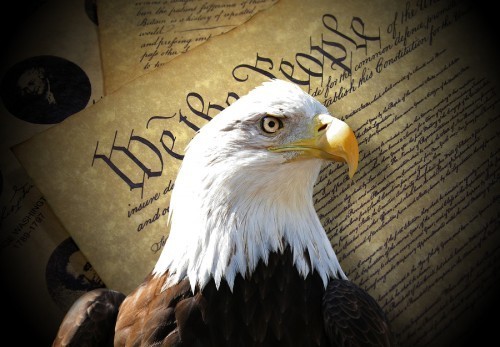 “The history of the U.S. Constitution we weren’t taught in school”, first published here in 2012, has turned out to be one of my most popular posts. I thought a repeat this holiday week would be appropriate.
“The history of the U.S. Constitution we weren’t taught in school”, first published here in 2012, has turned out to be one of my most popular posts. I thought a repeat this holiday week would be appropriate.
Only the title of the post has changed:
If you’re like me, I learned in grade school that the U.S. Constitution was based on ancient Greek democracy. Which was a creative stretch of the truth, since ancient Greece was not a democracy.
My research as to what children are taught today about the origin of our government is also disappointing, although there are some states that have updated the teachings to include Native American influence.
Apparently the Founding Fathers simply created it out of thin air, or were influenced by European governments even though there was no democracy anywhere in Europe at that time.
The True History of the U.S. Constitution
The truth is that the U.S. Constitution is modeled in both principle and form on the Great Law of Peace of the Native American tribe known as the Iroquois.
This is absolutely, unequivocally historical fact. While there may have been other influences, when compared side by side, the influence of the Great Law of Peace is irrefutable.
In 1987, the United States Senate acknowledged that the Great Law of Peace of the Iroquois Nations served as a model for the Constitution of the United States. (U.S. S. Con. Res. 76, 2 Dec. 1987).
And since the U.S. Constitution was a model for the charter of the United Nations, the Iroquois Great Law of Peace is also a basis of international law.
When the Founding Fathers looked for examples of effective government and human liberty upon which to model a Constitution to unite the thirteen colonies, they found it in the government of the Iroquois Nation.
In the 18th Century, the Iroquois League was the oldest, most highly evolved participatory democracy on Earth.
I find it sad that the true story is still not taught in all our schools [although some do]. But here it is:
The Peacemaker and the Great Law of Peace
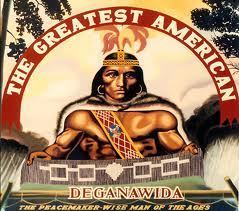
The Peacemaker
In the 12th Century, five tribes in what is now the northeastern U.S. were constantly at war: the Mohawks, Seneca, Oneida, Onondaga and Cayugas. The wars were vicious and, according to tribal history, included cannibalism.
One day, a canoe made of white stone carried a man, born of a virgin, across Onondaga Lake to announce The Good News of Peace had come and the killing and violence would end.
He traveled from tribe to tribe over the course of years, preaching peace because peace was the desire of the Creator. Oral tribal history says it may have taken him 40 years to reach everyone and get agreement from all five tribes.
This man became known as The Peacemaker.
Eventually, the five tribes agreed to the Great Law of Peace and became known collectively as the Haudenosaunee, which means People of the Long House. Outsiders refer to them as Iroquois.
[In 1722, the Tuscarora joined the Confederacy so today it’s known as the Six Tribes of the Iroquois Confederacy].
The Great Law of Peace was a vehicle for creating harmony, unity and respect among human beings.
Its recognition of individual liberty and justice surpasses that of many democracies.
The Great Law of Peace includes:
freedom of speech,
freedom of religion,
the right of women to participate in government,
separation of powers,
checks and balances within government.
a government “of the people, by the people and for the people,”
three branches of government: two houses and a grand counsel,
A Women’s Council, which is the Iroquois equivalent of our Supreme Court –settling disputes and judging legal violations.
The central idea underlying Iroquois political philosophy is that peace is the will of the Creator, and the ultimate spiritual goal and natural order among humans.
The Founding Fathers’ consultation with the Iroquois
 For decades, the Iroquois had urged the English colonists to unite together as one independent and free people.
For decades, the Iroquois had urged the English colonists to unite together as one independent and free people.
George Washington, Ben Franklin and Thomas Jefferson met frequently with the Iroquois and made themselves very familiar with the Great Law of Peace.
Washington expressed “great excitement” over the two houses and Grand Counsel.
Several delegates from the Iroquois Confederacy attended the Continental Congress in 1776 as it wrote the Declaration of Independence and drafted the Constitution of the United States, modeling it on the Iroquois Constitution.
Three weeks later, the Declaration of Independence was signed, and the United States of America was born.
What got left out of the U.S. Constitution
In fact, just about the only parts of the Great Law of Peace that our founding fathers didn’t incorporate were these:
The Seventh Generation principle: The Constitution of the Iroquois Confederacy states that chiefs consider the impact of their decisions on seven generations into the future.
The role of women: Clan mothers choose candidates [who are male] as sachems [political leaders]. The women maintain ownership of land and homes, and exercise veto power over any council action that may result in war. The women can also impeach and expel any leader who conducts himself improperly or loses the confidence of the electorate; then the women choose a new leader.
Imagine how different our world would be today if our government had included these principles from the start
The symbols
The Peacemaker designated The Tree of Peace as a symbol of the Great Law of Peace — a great white pine tree whose branches spread out to shelter all nations who commit themselves to Peace.
Beneath the tree the Five Nations buried their weapons of war.
Atop the tree is the Eagle-that-sees-far.
There is a bundle of five arrows tied together to represent strength of five tribes bound together in peace.
Four long roots stretch out in the four sacred directions—the “white roots of peace.”
Thomas Jefferson adopted the symbols of the Peacemaker legend.
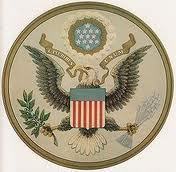 The Tree of Peace became the Liberty Tree displayed on colonial flags.
The Tree of Peace became the Liberty Tree displayed on colonial flags.Eagle-that-sees-far became the American Eagle, still a symbol of American government.
On the U.S. Great Seal, the American Eagle clutches a bundle of thirteen arrows, representing the original colonies.
Our eagle also holds an olive branch symbolizing that the United States of America has “a strong desire for peace, but will always be ready for war.”
Separate leaders for war and peace
There’s no separation of church and state in Iroquois society; spirituality lies at the root of government and law.
However, the Iroquois Confederacy, as with most tribes, had separate leaders for war and peace. As a lawmaker, the sachem could never go to war in his official capacity as sachem. If disposed to take the warpath, he laid aside his civil office for the time being, and became a common warrior.
The colonists followed this model, too. The inability to separate the civil government and military has doomed many imitators of American democracy, particularly in Africa and Latin America.
The three principles of the Great Law of Peace
1) Righteousness, meaning people must treat each other fairly. “Each individual must have a strong sense of justice, must treat people as equals and must enjoy equal protection under the Great Law.”
2) Health: “Health means that the soundness of mind, body and spirit will create a strong individual. Health is also the peacefulness that results when a strong mind uses its rational power to promote well-being between peoples, between nations.”
3) Power: “The laws of the Great Law provide authority, tradition and stability if properly respected in thought and action. Power comes from the united actions of the people operating under one law, with one mind, one heart, and one body. Such power can assure that justice and healthfulness continue. People and nations need to exercise just enough power to maintain the peace and well-being of the members of the Confederacy.”
It’s the omission of these three principles, the seven generations rule and the role of women that cause Native Americans today to say that, the United States Government copied the Great Law of Peace but didn’t really understand it.
So our forefathers copied the Great Law of a people whose land we stole and against whom our government committed genocide, and then kept it a secret for two hundred years.
It just makes me want to cry.
Please teach your children the truth of the history of our great country.
June 25, 2014
7 steps to powerful affirmations
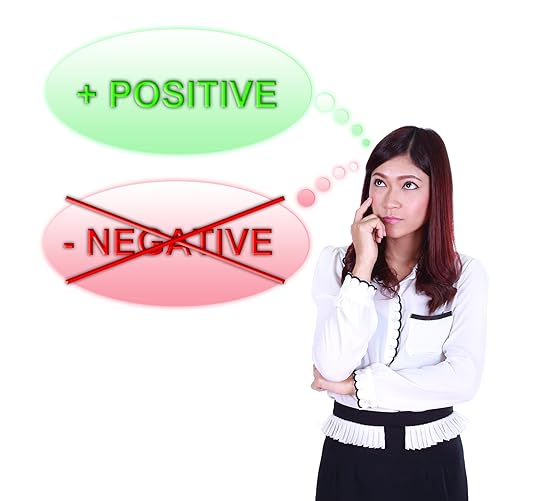
 Most of us have heard about using affirmations as a way to bring about change in our lives. In fact, many coaches, counselors and motivational teachers recommend using them.
Most of us have heard about using affirmations as a way to bring about change in our lives. In fact, many coaches, counselors and motivational teachers recommend using them.
Unfortunately, affirmations are often taught incorrectly or misunderstood.
In this post I’ll teach you the 7 steps to using affirmations effectively.
What are affirmations?
Affirmations are any statement that we make. It’s that simple.
When we use negative statements, we are tapping into a low energy, which can make us feel heavy, hopeless or stuck.
Positive statements or affirmations open higher channels in our consciousness to create new feelings, beliefs, thoughts and outcomes.
So to work with affirmations, it’s important to get the wording right.
What affirmations do
What we put our attention on grows and becomes permanent in our lives. The best results will come from training ourselves to think and speak in positive ways.
The words we speak to others represent just 7% of the results we get from communication. That’s because tone and body language are important communication tools as well.
But the words we speak to ourselves represent 100% of the results we’ll get in life!
Our self-worth is 100% reliant on our inner dialogue — both thoughts and words.
There are two kinds of thoughts: thoughts that empower and those that don’t. Period.
When affirmations don’t work
According to Bruce Lipton in The Biology of Belief: Unleashing the Power of Consciousness, Matter, & Miracles :
:
“When it comes to sheer neurological processing abilities, the subconscious mind is millions of times more powerful than the conscious mind. If the desires of the conscious mind conflict with the programs in the subconscious mind, which “mind” do you think will win out?”
Last week’s post was about the superpower of the subconscious mind. The subconscious mind uses 95% of our brain power, as opposed to the 5% used by our conscious mind.
So the subconscious rules, and in working with affirmations, you must use statements your subconscious mind can accept.
For affirmations to work they must be reasonable, believable and acceptable to both the conscious and subconscious minds. Otherwise they could be dismissed by the conscious and sub-conscious mind as wishful thinking.
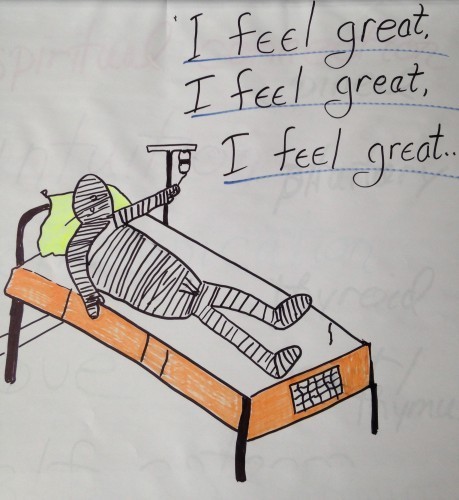 For example, a man in a hospital bed in a full body cast saying “I feel great” won’t work, because it’s obvious to everyone, including his subconscious mind, that he doesn’t feel great.
For example, a man in a hospital bed in a full body cast saying “I feel great” won’t work, because it’s obvious to everyone, including his subconscious mind, that he doesn’t feel great.
By making the affirmation a process, such as, “every day my body is healing itself” it will be believable to the subconscious mind.
7 steps to powerful affirmations
1. Use affirmations as a process. If you have zero $, saying “I am wealthy” won’t work because your subconscious knows it’s not true.
Rather than a bold statement, change it into a process by saying, “every day in every way, I feel myself attracting prosperity.”
“Each day in every way my body is healing itself.”
“I am so happy that money comes to me in increasing quantities in multiple ways.”
If you’re bad at math, don’t say, “I’m good at math” because you’ll know it isn’t true. Shift it into a process: “Each day I am improving at math.”
“Each day in every way, I’m feeling a little better.”
“Each day my neck is improving.”
2. Experience it in your body: For an affirmation to work, you also need an experience of it in your body. That’s why it’s good to say it out loud three times. You’ll then have the physical sensation of saying it as well as hearing it.
“My body knows how to heal itself.”
3. Read it off a card and you’ll also see it. Post your affirmation around the house. When you see it, say it out loud.
4. Where: According to Louise Hay, people who do affirmations in front of a mirror make much quicker progress than people who don’t.
“Each day in every way, I’m open to receiving love.”
“More and more…..”
5. Use present tense: Continually make positive statements about how you want life to be. Always make your statement in the present tense such as “I am” or “I have.” If you make it in the future – I want, or I will have – that is where it will stay: in the future.
“I am open to receiving love in my life.”
6. When: Say your affirmations first thing in the morning and last thing at night, 3 times out loud in front of the mirror, to help reprogram your subconscious mind.
7. For how long: work with an affirmation for at least 21 days. That’s the minimum amount of time it takes to implant a new habit.
For inspiration, check out this short video as an example of a good way to start your day!
June 18, 2014
The superpower you may not know you have
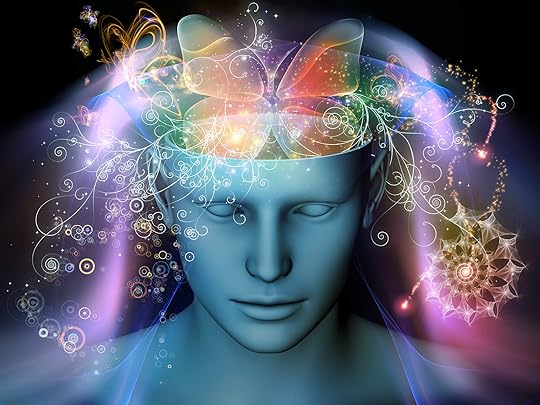
 Did you know you have a superpower? One that can lift your life from the mundane to the extraordinary?
Did you know you have a superpower? One that can lift your life from the mundane to the extraordinary?
It’s your subconscious mind, which you can communicate with and use to bring about remarkable changes in your life.
The superpower of your subconscious mind
Have you ever experienced driving down the road and realizing you have no recollection of the past 10 miles? And it makes you wonder how you didn’t have an accident?
You didn’t have an accident because your subconscious mind was doing the driving for you.
My subconscious mind is the reason I can daydream while I mow the lawn with my electric mower and not run over the cord.
Those things we do on automatic are often done by our subconscious mind, so why not learn to use it to our advantage?
A brain lesson
Our conscious mind uses only 5% of our brain capacity and interprets just 40 environmental stimuli per second.
That sounds like a lot until you realize that the subconscious mind can process 20,000,000 environmental stimuli per second and uses up to 95% of our brains. It’s the part that can drive the car when we’re daydreaming.
The subconscious mind is the reason that affirmations may not work unless we’re working with the subconscious and not against it.
[Some experts, such as Bruce Lipton, Ph.D. use the terms unconscious and subconscious interchangeably. Freud would say the unconscious is where repressed emotions are buried and the subconscious is right beneath the surface, ready to bring us information we need, such as a telephone number stored in our brains. For our purposes, the distinction isn’t really important].
The energy of words
“The best advice I can give anyone at any time is to never complete a negative thought or statement,because if you think or say it, it’s going into the computer in your head and can come true.” Bear Heart in The Wind Is My Mother
Words carry energy. This has been demonstrated by the work of scientist Masaru Emoto, which I’ve written about in a previous post.
High energy words vibrate higher and faster, causing us to feel good. Low energy words such as sadness and guilt resonate at a lower frequency.
A University of Wisconsin study demonstrated that low energy thoughts lower the immune system and make people more illness prone.
So it’s very important to choose your words carefully, be it daily conversation, self-talk or working with affirmations because they’re going into the computer in your head – the subconscious.
It’s also important to understand that our subconscious mind does not process what is “not.” It simply responds to the key words you give it.
Children under seven are inclined to respond like the subconscious mind. “Don’t hit your sister” is received as “hit your sister”.
Say to a child, “Don’t touch that” and what do they do? They touch it.
Since our subconscious doesn’t hear “not” this may explain much of the behavior in the western world. The Ten Commandments becomes: Thou shalt murder, commit adultery, steal, bear false witness against your neighbor, covet your neighbor’s wife, etc.
This is like learning a new language. Initially you work to translate low energy words and phrases to high energy until it becomes automatic.
It took me years to develop the habit of using positive thoughts and language– but I stuck with it and it changed my life. It can change anyone’s life. There’s nothing special about me I assure you.
Our genes do not determine our destiny; we do
It used to be believed that our genes determined our destinies but that’s old news. How many times have we heard or said, “my father died of a heart attack in his 40s so I probably will, too” or “my mother and grandmother were overweight; it’s in my genes so I can’t fight it.”
Poppy-cock!
In The Biology of Belief: Unleashing the Power of Consciousness, Matter, & Miracles, biologist Bruce Lipton talks about the new field of epigenetics, which translates as control above the genes. The science of epigenetics has determined that genes only account for 48% of our intelligence; the remaining 52% are determined by environmental factors.
Our health and lives are not predetermined by our genes. Epigenetics recognizes that our perceptions of the environment, including our consciousness, actively control our genes. Through epigenetic mechanisms, “applied consciousness” can be used to shape our biology and make us masters of our own lives.
Antidepressants are one of today’s most frequently prescribed medications. This fact, alone, may indicate that people are abdicating their self-empowerment.
Imagine the possibilities if people were asking: “How can I apply my consciousness, and change my perceptions of my environment, to reshape my biology and behavior?”
Affirmations are one way of using applied consciousness. Next week I’ll write about how to do them in the most effective way.
Meanwhile, just for this week, focus on keeping your language as positive as you can. No, “poor me” thoughts allowed. Focus on what works, as well as on gratitude, and see what happens.
June 11, 2014
Who’s your cheerleader?

 Who’s your cheerleader?
Who’s your cheerleader?
And by cheerleader, I mean someone who has believed in you when no one else did.
Someone who encouraged you to act in spite of your being surrounded by obstacles.
The person who saw your potential, the diamond in the lump of coal.
The person who told you, “Yes, you can” when you weren’t so sure you could.
Who was your cheerleader?
How Lynn’s cheerleader helped launch her career
I used to work in the legal profession and the best paralegal I ever worked with was Lynn.
By the time I got to know her she was so well established in the Los Angeles legal community that she free-lanced for a high hourly rate and had law firms lined up to hire her for their trial preparation.
She was smart, fastidious, well-organized and really knew her stuff — every lawyer’s dream paralegal.
But she recently told me she sure didn’t start out that way. And if it weren’t for the first attorney she worked for, she might never have succeeded in that career.
Her first job as a paralegal was helping prepare for a trial. She didn’t have any experience; all she had was her enthusiasm, work ethic and brains.
She admits she made mistakes.
Several others in the firm suggested to the attorney who hired her that he replace her with someone more experienced, but he refused, saying, “She’s smart, she’ll learn to do this.”
He mentored her, had confidence in her and taught her what she needed to know.
When they won a big judgment in the lawsuit they were working on, he gave her a large bonus and a framed copy of the judgment that she helped achieve.
Lynn told me that his belief in her gave her confidence, and made all the difference in her moving on to a successful career. It instilled in her the feeling that she could do anything she wanted.
Any time her confidence faltered, she looked at that framed judgment.
As Lynn put it, “He helped me become me.”
We all need at least one person like that attorney who believed in her. Who’s yours?
It can be as simple as, “Yes, you can!”
When I was taking horse-back riding lessons as an adult, there was a day when my teacher, Summer, had me riding in a big circle, while she had the horse on a lunge line. So I was riding while she was helping instruct and control the horse.
After a few minutes, Summer said, “Take your right foot out of the stirrup.”
I did so. It was a little scary, but I continued riding the horse in the big circle.
Summer: “Now take your left foot out of the stirrup.”
Me: “I can’t do that!”
“Yes, you can.”
So I took my other foot out of the stirrup and found I could ride without falling off. That was a giant step forward in my confidence on a horse.
All because she told me I could and I trusted her enough to try.
Someone who sees our potential and helps nourish it can make all the difference.
By the way, the following year after that lesson with Summer I went on to win first place in the equestrian jumping competition at that stable, and the silver cup for overall best in my class.
That might not have happened without Summer’s constant encouragement and belief in me.
Who our cheerleaders might not be
Our cheerleaders are not always our parents, families or teachers– particularly if we have chosen a path different than what they would have liked.
There are many school teachers who bolster the confidence of their students. And some who shoot down their dreams.
Horse trainer and author Monty Roberts tells the story of growing up poor and writing a school assignment on what he wanted to be when he grew up.
He wrote about his dream of one day owning a 200-acre horse ranch, with a 4,000 square foot house.
Monty poured his heart and soul into that paper, including diagrams of the property and the house, and was astounded to be given an “F” by his teacher!
She told him, “That’s an unrealistic dream for a young boy like you who has no money and comes from an itinerant family. . . If you’ll re-write your paper with a more realistic goal, I’ll reconsider your grade.”
Monty thought long and hard about it overnight. When he went back to school the next day he told the teacher, “You can keep your grade, and I’ll keep my dream.”
Monty grew up to be a world-famous horse trainer and best-selling author. And he told this story to friends as they all sat in his 4,000 square foot house on his 200-acre horse ranch.
Just as he’d dreamed it.
So the thing to keep in mind about people who tell you, “you can’t” is that they are often wrong!
When you don’t have a cheerleader
We all need someone in our lives who sees our potential and helps nourish it.
It may or may not be our parents
It may or may not be our teachers
It may or may not be our athletic coaches.
It may or may not be our friends.
But hopefully we each have had someone who believes in us and will give us that kind of motivation.
If you don’t, you may need new friends.
And maybe for a while, until you find those friends, you’ll have to be your own cheerleader. Stay inspired by:
watching motivating videos on YouTube: I like Anthony Robbins, Abraham-Hicks, Zig Ziglar and Andy Andrews,
reading motivational/inspirational books. Biographies of people you admire are a great place to start.
That’s what I do when I don’t have anyone around who can encourage me. I encourage myself!
Who encouraged you when you needed it in your life? Feel free to share in the comments below. And be sure to thank them!
June 4, 2014
The Wind Is My Mother book trailer

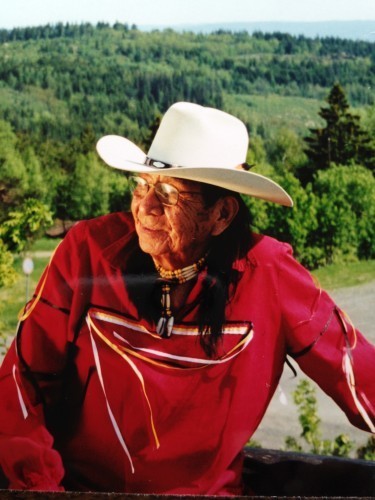
“Bear Heart has a wisdom in his words that I use daily to further my spiritual growth. My copy of The Wind Is My Mother lives right there on my nightstand and gets referred to on a regular basis. I have bought about three dozen copies of this book to share with friends and family trying to get their spiritual lives in balance.”
The above is a review on Amazon.com from a reader of The Wind Is My Mother , which I had the privilege of co-authoring with my spiritual teacher, Bear Heart.
, which I had the privilege of co-authoring with my spiritual teacher, Bear Heart.
There are dozens more reviews like it, such as “Any time that I’m feeling depressed, I reread this book,” and “This book changed my life forever.”
How The Wind Is My Mother came to be
I first met Bear Heart at a time when my life was in shambles, and just a short half hour meeting with him gave me hope and started to turn my life around.
After a few years of knowing him, I asked if I could write a book about his teachings. I figured if a half hour conversation with him could make such a profound difference in my life, a book of his wisdom could surely help many others.
My request was quite audacious since I had never had anything published before! But, amazingly, he said, “yes.”
In light of things he has said to me over the years, I’ve since come to realize that he recognized that I was the one who was supposed to write the book. It was that simple. Not that I was a great writer; just that it was meant to be.
I held an office job at the time, so I wrote the book over the course of five years, transcribing his talks, and visiting him in New Mexico to flesh out more background to his stories.
For me it was a labor of love and I never dreamed it would touch so many hearts worldwide.
The Wind Is My Mother has been in continuous print since 1996 and translated into a dozen languages around the world – making it officially a “best-seller.”
has been in continuous print since 1996 and translated into a dozen languages around the world – making it officially a “best-seller.”
The reason is simple: Bear Heart was a very wise spiritual teacher, and a marvelous storyteller who could entertain as well as inspire.
Bear Heart passed away in 2008, but his wisdom lives on through The Wind Is My Mother . The book was updated in 2012 to include an Epilogue with additional stories of his life.
. The book was updated in 2012 to include an Epilogue with additional stories of his life.
I am continually humbled to have been a part of something that has touched so many lives.
If you haven’t yet read it, I hope this new book trailer below will inspire you to do so.
For those of you who have read it, perhaps this 3-minute video will inspire you to want to read it again.
May 28, 2014
Bear Heart, humility, and praying for snow
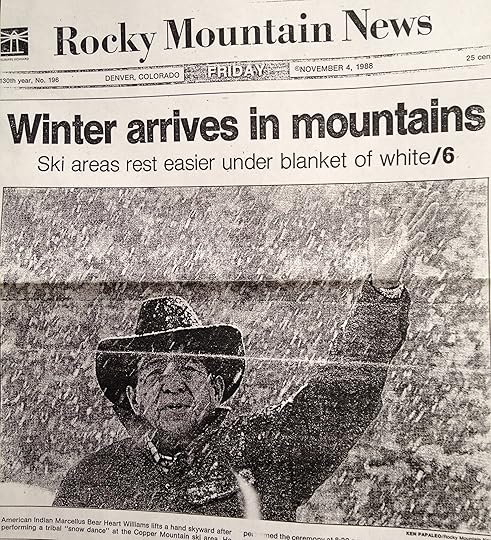
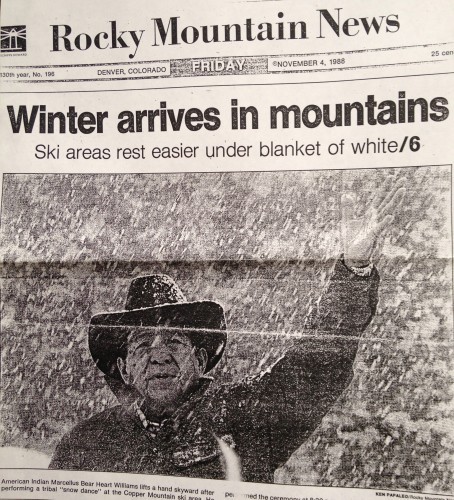
In 1988, Colorado was experiencing a snow drought.
I know that seems hard to imagine after the winter we just went through, but that was the case back then.
The Copper Mountain Ski Resort was close to having to lay off staff and close, so the owner, a friend of Bear Heart’s, invited him to Colorado to pray for snow.
Before Bear Heart finished his ceremony, a heavy snow storm came in; one that the meteorologists had not predicted.
It was so unexpected that Bear Heart was featured on the cover of the Rocky Mountain News. He was also interviewed by the television news show “A Current Affair” to discuss his praying for snow.
The video below is a short excerpt from a longer interview by veteran reporter Mike Watkiss.
What I find so remarkable is that Bear Heart did not take credit for the snow that fell that day — the mark of true humility, and a deep, abiding faith in a Higher Power.
It’s a short excerpt, just under 3 minutes. I hope you enjoy it.

